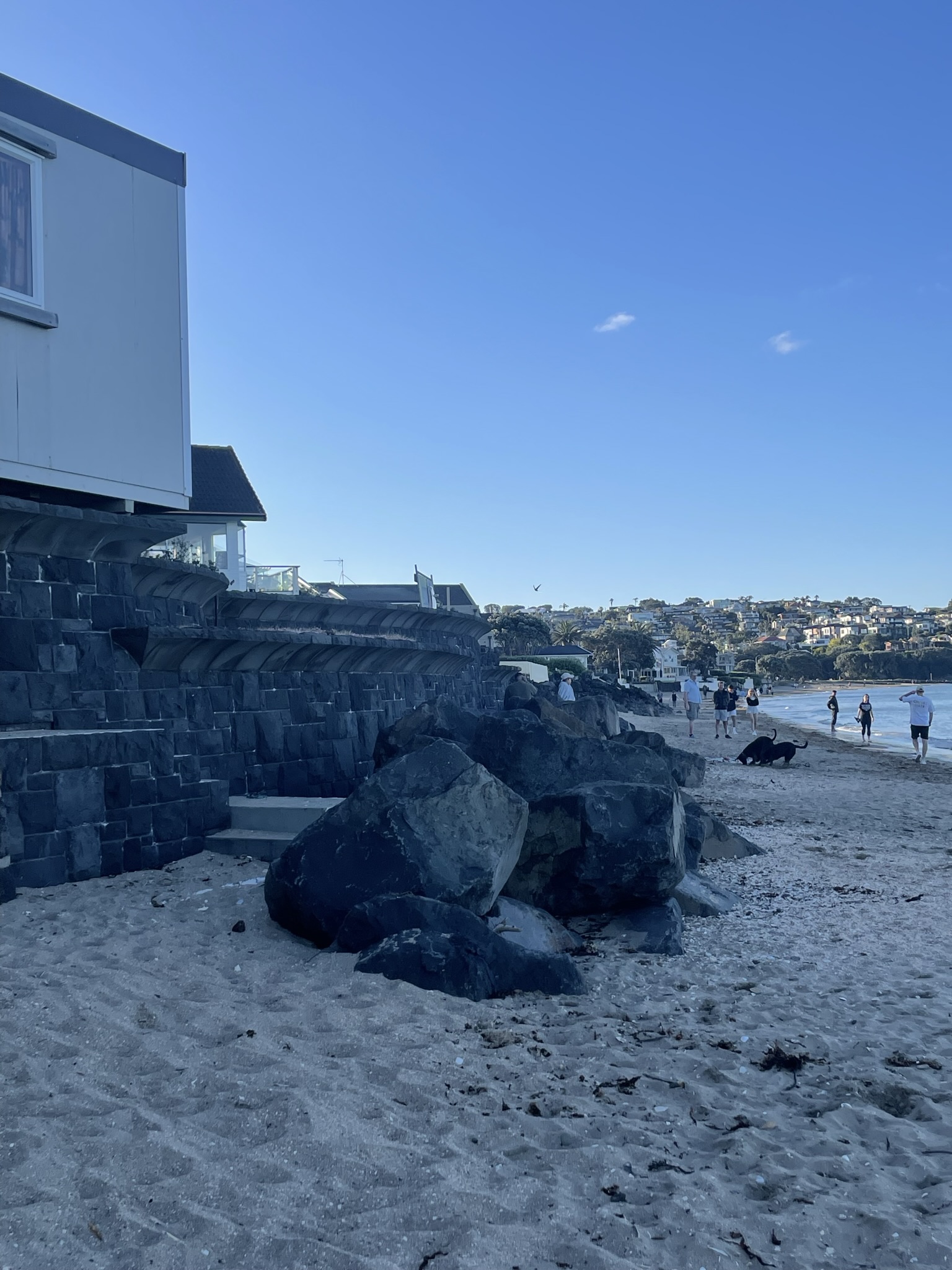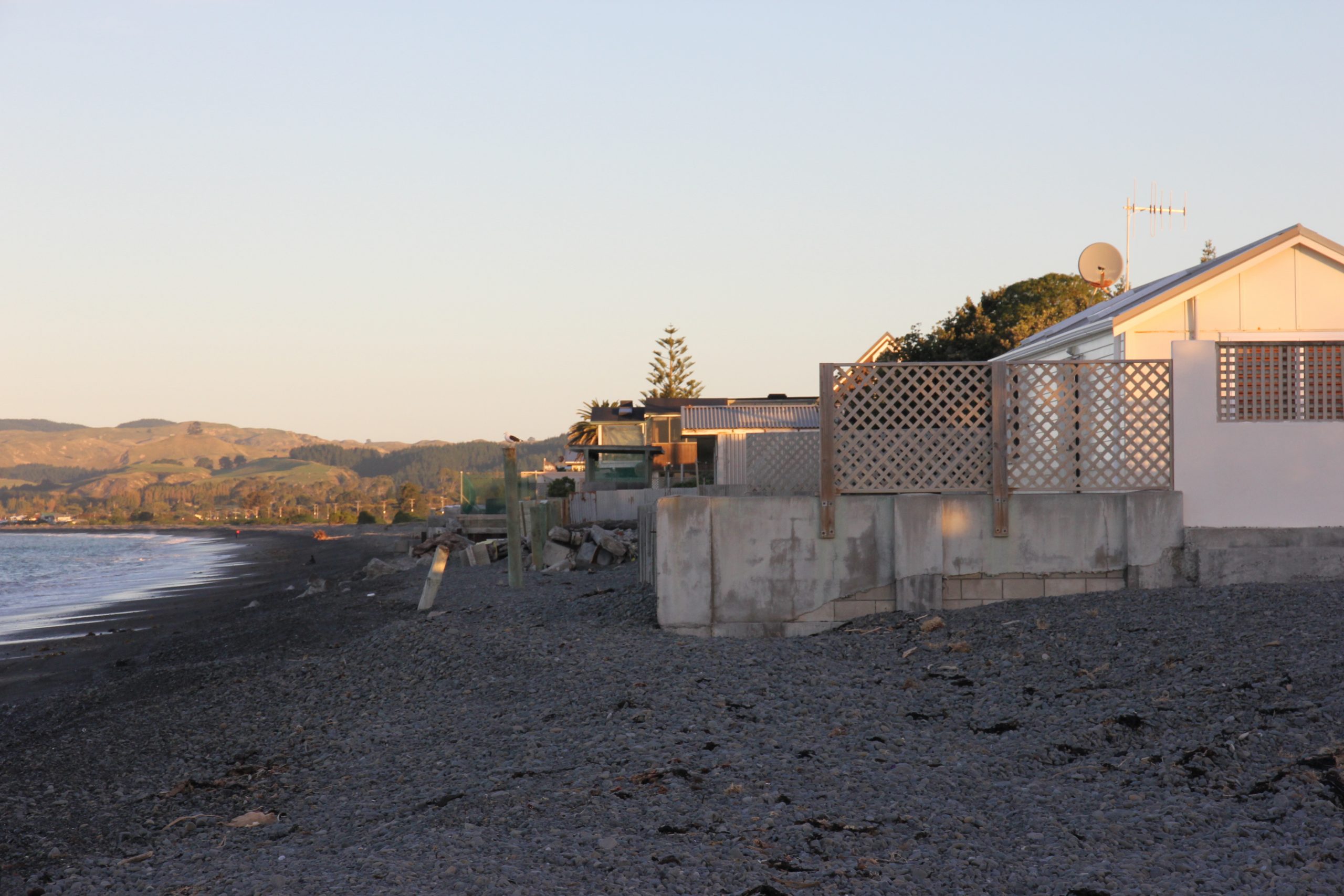Human Modifications.
The coast is a naturally dynamic environment moving landward and seaward over time in response to changes in sediment supply, storm events and fluctuations in sea level. However, human interventions often alter this dynamism. When structures such as sea walls, rubble ramparts, or groynes are installed in an attempt to stop erosion and stabilise the coastline, they can often inadvertently exacerbate erosion in neighbouring coastal areas. Other human impacts, such as bulldozing natural dune systems, sand mining, building too close to the coast and driving on sand dunes, can all have big impacts on the coast.
For example, a sea wall may stop landward horizontal coastal erosion at the location where it was installed but may also cause vertical erosion (downwearing of the beach) directly in front of the wall and cause landward erosion further along the coast (known as the ‘end effect’ of sea walls). Similarly, groynes are designed to trap sediments that are being transported along the coast ensuring beach build up in front of the groyne. This can in turn disrupt sediment transport and cause erosion in the coastal environment behind the groynes.





